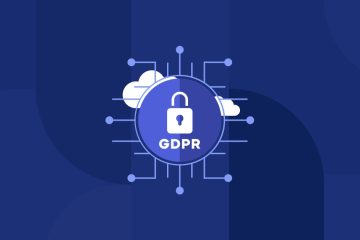
In the wake of the General Data Protection Regulation (GDPR) coming into force in 2018, organizations across Europe and the globe have been grappling with the complexities of data protection and privacy. With its stringent requirements, the GDPR was a revolutionary shift in how personal data is handled, stored, and protected. For businesses, ensuring compliance is not only a legal requirement but a fundamental part of maintaining trust with customers and clients.
While many organizations have made significant strides in meeting GDPR requirements, the question remains: how can GDPR compliance be scaled to meet the growing needs of modern, data-driven businesses? From small startups to multinational corporations, the challenge of maintaining consistent compliance while expanding operations remains a complex undertaking. In this article, we will explore advanced strategies that can help organizations scale their GDPR compliance processes while remaining agile and efficient.
1. Implement a Data Privacy by Design Framework
One of the core principles of GDPR is “privacy by design,” which mandates that privacy measures should be integrated into the development process from the outset, rather than being added on later as an afterthought. To scale compliance effectively, organizations need to embed this principle into their organizational culture and operational workflows.
A robust “privacy by design” framework involves understanding the entire data lifecycle and making privacy a cornerstone of each stage, from data collection and processing to storage and disposal. It requires a thorough assessment of all touchpoints where data is collected, ensuring that personal data is only gathered when absolutely necessary and that all processing activities are justified under the GDPR’s lawful bases.
To scale this approach, companies can implement privacy-enhancing technologies such as data anonymization, encryption, and secure access controls. These measures help ensure that even as the volume of personal data increases, the risks to privacy remain minimized. Additionally, organizations can create privacy impact assessments (PIAs) that are regularly updated to reflect new data processing activities, ensuring that privacy risks are consistently monitored and addressed.
Key Benefit: Integrating privacy by design allows organizations to build compliant systems from the start, reducing the risk of data breaches and ensuring ongoing privacy protection as the business grows.
2. Automate Data Mapping and Classification
Data mapping and classification are critical components of GDPR compliance. Organizations must have a clear understanding of what personal data they collect, how it is stored, processed, and shared, and who has access to it. This can quickly become an overwhelming task, especially as businesses scale and data volumes increase.
To address this, advanced organizations are leveraging automation tools to streamline the data mapping and classification process. Automated systems can help track data flows across multiple platforms and systems, ensuring that all personal data is cataloged and classified according to its sensitivity level. These tools can also ensure that data is aligned with specific compliance requirements, such as retention periods, encryption standards, and access controls.
Additionally, automated systems can continuously monitor data storage and usage, flagging any deviations from established policies and providing real-time reports to compliance teams. This proactive approach helps organizations stay on top of their data protection obligations without relying on manual tracking, which can be prone to errors and inefficiencies.
Key Benefit: Automation reduces the complexity and cost of data mapping and classification, ensuring comprehensive tracking and compliance across large, complex data ecosystems.
3. Enhance Consent Management with Robust Solutions
Obtaining valid consent is one of the most significant compliance challenges under GDPR, especially as businesses scale and handle large amounts of user data across multiple platforms. Consent must be freely given, specific, informed, and unambiguous, with a clear indication of agreement from the individual. As the volume of personal data grows, tracking and managing consent becomes increasingly difficult.
To scale consent management efficiently, organizations can deploy robust consent management platforms (CMPs) that streamline the process across multiple channels. These platforms ensure that consent is collected in compliance with GDPR’s requirements and that individuals can easily withdraw consent at any time. Additionally, these platforms can store consent logs for audit purposes, ensuring that businesses can demonstrate their compliance during regulatory reviews.
CMPs can also integrate with other compliance tools, such as customer relationship management (CRM) systems, ensuring that consent preferences are automatically updated and reflected across all touchpoints. This eliminates the need for manual updates and reduces the risk of non-compliance.
Key Benefit: Robust consent management solutions ensure that consent collection, tracking, and withdrawal are handled efficiently at scale, reducing the risk of non-compliance and enhancing customer trust.
4. Develop a Scalable Data Retention Policy
GDPR mandates that personal data should not be kept longer than necessary for the purposes for which it was collected. As businesses scale, managing data retention policies across vast amounts of data stored in various systems becomes a significant challenge. Failure to comply with retention policies can result in legal consequences and reputational damage.
To scale data retention practices effectively, organizations should implement automated data retention tools that ensure compliance with retention schedules. These tools can automatically flag data that has reached the end of its retention period and securely delete it or anonymize it, depending on the organization’s data management policy.
Moreover, businesses can integrate these tools with existing data management systems, ensuring that data retention is continuously monitored across all platforms. Scalable solutions help mitigate the risk of storing unnecessary personal data and ensure compliance with GDPR’s data minimization and storage limitation principles.
Key Benefit: Scalable data retention tools automate the process of data deletion or anonymization, helping organizations comply with GDPR’s retention requirements and reducing the risk of storing unnecessary or outdated personal data.
5. Foster a Culture of Privacy Awareness and Training
One of the most effective ways to scale GDPR compliance is by fostering a strong culture of privacy awareness across the organization. Employees at all levels must be trained on the importance of data protection and their specific responsibilities under GDPR. A well-educated workforce is less likely to make mistakes that can lead to data breaches or compliance failures.
For scaling training initiatives, organizations can implement e-learning platforms that provide GDPR training modules tailored to different departments. These platforms can track employee progress and provide refresher courses on a regular basis to ensure that privacy awareness remains top of mind.
Advanced solutions can also offer simulated phishing attacks and other practical exercises to help employees identify potential security threats. By combining regular, targeted training with simulated exercises, organizations can ensure that their workforce remains vigilant and well-prepared to handle data responsibly.
Key Benefit: Scalable, continuous training programs foster a culture of compliance, ensuring that employees understand their data protection responsibilities and minimizing the risk of human error.
6. Leverage Artificial Intelligence for Privacy Compliance
As organizations scale and the volume of data grows exponentially, maintaining manual oversight of compliance efforts becomes increasingly difficult. Artificial Intelligence (AI) can play a crucial role in scaling GDPR compliance by automating complex tasks such as monitoring, reporting, and decision-making.
AI-driven solutions can help detect potential GDPR violations by analyzing data access patterns, flagging anomalies, and generating real-time compliance reports. For example, AI tools can assess whether personal data is being processed in line with a legitimate business interest or whether consent is required. Additionally, AI can enhance the accuracy of privacy impact assessments by automatically identifying data processing activities that could pose privacy risks.
By integrating AI into GDPR compliance efforts, businesses can proactively address compliance issues, reduce the risk of human error, and scale their operations without compromising privacy standards.
Key Benefit: AI-powered tools enable proactive, real-time monitoring and compliance reporting, reducing the workload for compliance teams while ensuring that privacy standards are maintained as the business grows.
Conclusion
As businesses continue to scale, GDPR compliance becomes increasingly complex. However, with the right strategies, tools, and technologies in place, organizations can navigate these challenges with confidence. By embedding privacy by design, automating data mapping and classification, enhancing consent management, developing scalable data retention policies, and leveraging AI and training programs, businesses can maintain compliance while expanding their operations.
The key to successful GDPR compliance at scale lies in adopting a forward-thinking, proactive approach that integrates privacy into every aspect of the business. With the right tools and a strong culture of privacy, organizations can not only meet GDPR’s stringent requirements but also build trust with customers, mitigate risks, and remain competitive in an increasingly data-driven world.
More News
-
Business Service Continuity Planning: Preparing for Disruptions
October 8, 2025 -
Top 10 E-commerce SEO Strategies That Work
April 3, 2025
Top News
-
Managing International Clients Legally With a Freelance Visa
October 16, 2025 -
Training and Development for Business Service Professionals
October 8, 2025 -
Business Service Continuity Planning: Preparing for Disruptions
October 8, 2025
Most Viewed
Recent Posts
- Managing International Clients Legally With a Freelance Visa
- Training and Development for Business Service Professionals
- Business Service Continuity Planning: Preparing for Disruptions
- Corporate Wellness ROI: Why Businesses in Singapore Are Investing in Gym Fitness Programs for Employees
- Innovative Solutions for Green and Efficient Industries
Archives
- October 2025 (3)
- September 2025 (2)
- July 2025 (2)
- May 2025 (5)
- April 2025 (6)
- March 2025 (9)
- February 2025 (9)
- January 2025 (7)
- December 2024 (4)
- November 2024 (1)
- March 2023 (1)
- January 2023 (1)
- May 2022 (1)
- March 2020 (1)
Categories
- Business (10)
- E-commerce & Online Business (6)
- Finance & Accounting (5)
- HR & Hiring (5)
- Industries (6)
- Legal & Compliance (5)
- Management & Growth (5)
- Marketing & Branding (5)
- Technology & Tools (5)









